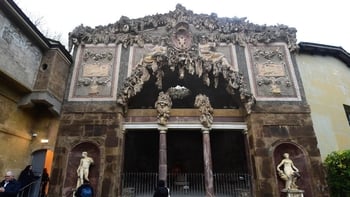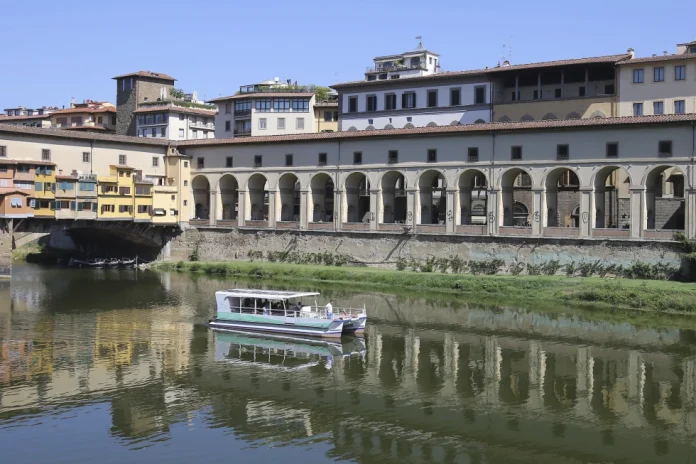For centuries, Florence’s 16th-century Vasari Corridor was only accessible to dukes and lords. Now, after an eight-year restoration project, the raised passageway connecting the city’s Uffizi Galleries to the former residence of the powerful Medici family has reopened to the public.
The corridor is named after Renaissance architect and biographer Giorgio Vasari, who designed it. It stretches about 750 meters (820 yards), running from the Uffizi Museums to the imposing Palazzo Pitti. Along the way, it passes over Ponte Vecchio, above the tiny historic jewelry boutiques that cross the Arno River.
Florence’s powerful Medici family built the corridor to move secretly and safely between different parts of the historic city.
Corridor Reopens Connecting Key Art Collections
Simone Verde, director of the Uffizi Gallery, said, “This reopening connects the two fundamental poles of the art collections—from the Uffizi Palace to the Pitti Palace and Boboli Gardens. It makes these treasures accessible to all visitors.”
Restoration and Safety Improvements
The gallery closed the corridor in 2016 to start restoration and improve safety standards.
Visitor Experience and New Access Route
Starting Dec. 21, visitors can enter the Uffizi Museum’s Gallery of Statues and Paintings. They will then walk through the interior of Ponte Vecchio and exit via the lush Boboli Gardens.
Unique City Views and Architectural Highlights

The corridor lets visitors bypass the Torre dé Mannelli. Additionally, they can enjoy unique views of the city, including the Church of Santa Felicita.
Accessibility and Modern Features
The renovation cost about 10 million euros. It added ramps, footbridges, and lifts to improve disabled access. Moreover, the space now features a new energy-efficient LED lighting system and full video monitoring.
The goal is to make the corridor a valid alternative route for tourists.
“The corridor allows us to turn overtourism from a problem into an opportunity,” Verde explained. “It gives visitors a way to see the connection between these two poles of the Medici and then Lorena collections.”
Every year, millions of tourists flock to the Tuscan city to admire its stunning art and architecture. popular Italian cities.















